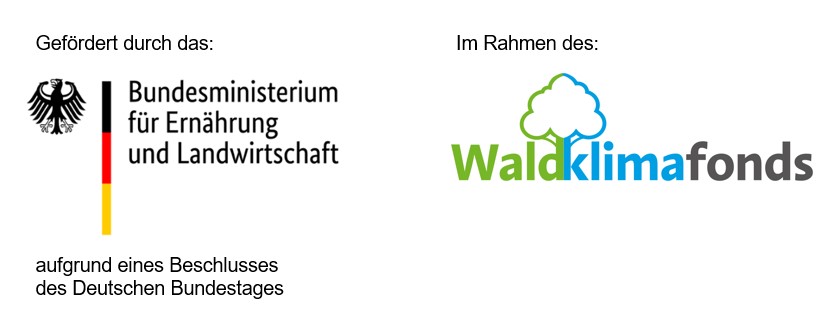Project
WaldSpektrum

Climate resilient forests - Recognising the potential in the natural spectrum and using it for forestry purposes
WaldSpektrum will use a novel research approach to systematically identify the range of tree species, associations and forest management options under climate change that maximise forest resilience, ecosystem services and timber yield, while respecting and enabling conservation and biodiversity objectives.
Background and Objective
The results obtained are to be a) offered in a comprehensible and publicly accessible form in a forestry decision-making aid and b) processed and communicated for further forestry applications.
Approach
WaldSpektrum is divided into 5 work packages (WPs; Table 1 and Figure 1) that build on each other. While WP1 is responsible for the general organisation, compiling, archiving and providing the necessary basic data, as well as contacting the stakeholder groups of private forest owners, but also forest authorities and forest research institutes, the last 4 APs form the core of a novel research approach to systematically identify forestry options for action (see also Figure 2). These four APs represent filters that, under climate change and at the given resolution for each grid cell in Germany, filter out those tree species, their associations and forest management options from the globally known spectrum of characteristics that correspond to the quantity of a large number of target variables. As a basic prerequisite, AP2 will identify those BMK and their associations that are initially viable or resistant and resilient and that record various target variables of forest restructuring and nature conservation (such as productivity, carbon storage, functional diversity, etc.). From these BMKs, AP3 will filter out those BMKs that are most suitable from a silvicultural point of view and meet requirements for storm-worm risks and groundwater recharge. AP3 will also record various target variables. AP4 will translate these BMK into real existing tree species using the largest global plant database and conduct analyses on phenotypic plasticity and potential best provenances. WP5 will receive these tree species, and all associated recorded information (such as association, forest management, functional diversity, phenotypic plasticity) and target variables, and synthesise them into forest management options that are economically, ecologically and conservation wise justifiable according to a defined scheme. These options for action are then offered in summary form in a public forestry decision-making aid.
Thünen-Contact

Involved Thünen-Partners
Involved external Thünen-Partners
- Potsdam-Institut für Klimafolgenforschung (PIK)
(Potsdam, Deutschland)
Funding Body
-
Fachagentur Nachwachsende Rohstoffe e.V. (FNR)
(national, öffentlich)
Duration
4.2022 - 3.2026
More Information
Project status:
ongoing

